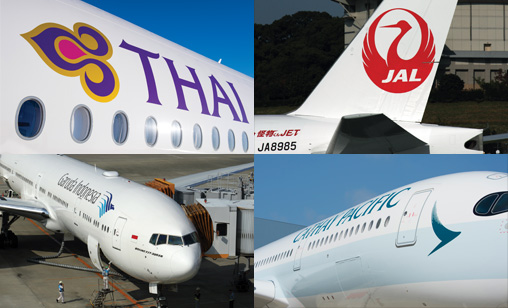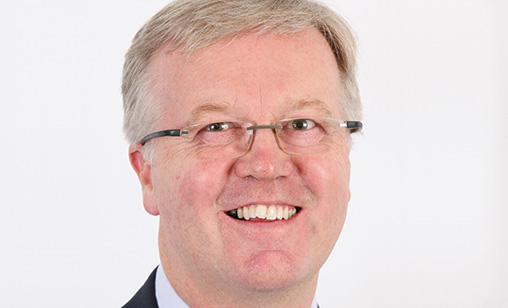Main Story
Ending the profit roller coaster?
Airlines have benefitted from billions of dollars in unexpected bottom line relief since the oil price collapsed in 2015. Has the impact of bargain basement oil overshadowed another significant industry development – sustainable annual profits?
February 1st 2017
Airlines worldwide reached a cyclical peak in 2016 when they collectively reported profits of $35.6 billion for the 12-month period, the International Air Transport Association (IATA) said in December. Read More »
The results will not be as impressive this year, but they will remain in profitable territory. Airlines will have “a soft landing” in 2017, with forecast global airline profits to decline to $29.8 billion, the association said.
 |
Global carriers have now reported eight successive years of aggregate profitability in an industry notorious for its rapid swings between profits and losses.
What has changed? IATA chief economist, Brian Pearce, said fuel is obviously an important factor in the formula, but added that until recently, every time the global economy collapsed airline profitability also collapsed.
“Typically, this cycle seemed to worsen as we moved into the early 2000s. But the trend seems to have altered since the Global Financial Crisis (GFC) in 2008, which had followed a big spike in the oil price. These two events delivered a shock to the industry,” Pearce said.
“We have seen an improving trend in financial health from that time. Since 2010 the global economy has not performed very well yet the airline industry has improved its financial performance. Structural improvements are taking place. It’s not just about the fall in fuel prices in the last 18 months.”
In an industry that has hundreds of carriers operating world-wide, clearly some carriers will be more profitable than others, including in the Asia-Pacific, but this sequence of sustained profitability appeared to be one of the most significant industry trends to emerge in decades, said IATA.
At present, airlines are receiving better returns on their investments in their businesses and are identifying sustainable defences against volatile economic conditions, said IATA. North American carriers dominate the positive industry totals with the majority of them generating above cost of capital returns. Some airlines in the Asia-Pacific and in Europe also are reporting high returns, but the profits picture is more mixed in both regions. Forecasts for 2017 predict Asia-Pacific airline profits would decline 13.7% this year, to $6.3 billion.
Analysts said there was broad evidence that carriers were ironing out the financial highs and lows of their fiscal performance. Thai Airways International, Garuda Indonesia, Japan Airlines, Malaysia Airlines, Qantas Airways and most recently Cathay Pacific Airways, are making great leaps forward in aircraft technology and responses to changing passenger demands.
Pearce said the strongest evidence of airline structural change was the gap between load factors achieved and break even load factors that drive ROIC (Return On Invested Capital). In 2008, the gap between break even and achieved load factor was marginal at only 1%-2%, he said.
Today, the break even load factor is around 62% and the load factor achieved by airlines is approximately 67%. “Clearly, the 2015 fall in jet fuel prices pushed break even loads down sharply and that boosted ROIC, said Pearce.
“Equally, the gap emerged several years earlier than the fall off in the cost of oil. So the improving trend in airline profitability is not just low fuel prices. The industry changed after the 2008 oil price spike and the GFC, with a steep rise in asset utilization or load factors, which was a combination of consolidation, fleet retirement and behavioral change.
“We saw that gap widen as airlines focused on more efficient utilization of their capacity and assets," he said.
A second indicator of structural change driving profitability and ROIC, he said, was evident from operating margins and revenue/investment capital (capital productivity).
 |
| 'We have seen an improving trend in airline financial health from 2008. Since 2010 the global economy has not performed very well yet the airline industry has improved its financial performance. Structural improvements are taking place in the industry. It’s not just about the fall in fuel prices in the last 18 months' |
| Brian Pearce IATA chief economist |
“Operating margins in the last three years have climbed and are expected to fall largely because of fuel prices. But an important component of the trend in improved ROIC has been the amount of revenue airlines can generate per dollar of capital invested since 2009,” said Pearce.
“Since the GFC, it is evident from the densification of seats on aircraft, but more importantly from the addition of ancillary revenues. IATA’s work on the NDC (New Distribution Capability) has been a key enabling standard that has allowed airlines to expand this revenue stream. It’s a trend improvement that will be around even if low oil prices go away.”
Oil averaged $44.6 per barrel of Brent crude last year and IATA forecasts it will increase to $55 in 2017. This will push jet fuel prices from $52.1 per barrel in 2016 to $64.9 per barrel in 2017. In mid-January, the price per barrel of jet fuel was $66.30.
Fuel is calculated to be 18.7% of the industry’s costs this year, which is significantly below the recent peak of 33.2% in 2012-2013. With no hedging, an increased fuel price would add almost $25 billion to airline costs, yet IATA predicted net airline profits will fall by only $5 billion in 2017.
“Of course fuel prices have been important,” said Pearce. “We’ve recently seen quite a sharp oil price rise after the OPEC (Organization of the Petroleum Exporting Countries) agreed to cut production.
“You can see OPEC producers’ spare capacity is at an all-time low. The market was developing to a point where there was under investment in oil that was building up to a potential future supply crunch. Why not higher? Essentially, the market is still over-supplied. The amount of oil floating around is still at record highs.”
The Economy Forecast Agency (EFA), which specializes in long-range financial market forecasts for corporate clients, believed crude oil prices will range from $59 to $62 a barrel by year end and from $65 to $75 a barrel in 2018.
For airlines, this means their fuel bills will rise and that the fuel hedging arrangements carriers have in place will decide how successfully individual carriers manage the cost increase.
Last month, European and Chinese traders shipped a record 22 million barrels of crude oil from the North Sea and Azerbaijan to Asia to plug any gaps in the supply chain following the OPEC production cuts.
More than 11 million barrels of North Sea Forties crude either have been offloaded or are on their way to Asia where they will join a record 11 million barrels of Azeri crude oil from Azerbaijan that is already being stored in the region, Reuters oil trade flows data reveals.
Seeing an opportunity to sell North Sea oil profitably in arbitrage deals to Asia, seven supertankers were chartered by commodity traders Vitol and Mercuria, Europe’s Royal Dutch Shell and China’s refiner Unipec to offload the European crude to China and South Korea. “Asia needs the oil, Europe has it. The OPEC cut has raised prices and that makes it profitable to send European oil to Asia,” said one senior trader.
Oil and structural changes apart, in the next 12 months capacity expansion is expected to slow to 5.6%, from 6.2% in 2016. Capacity growth will continue to outstrip demand, which will lower the global passenger load factor to 79.8%, from 80.2% last year.
Nevertheless, industry revenues are expected to rise slightly, to $49.4 billion, although this figure is well below annual revenue reported from 2010-2014.
Trading conditions remained challenging, IATA said, but connectivity continued to set new records. The global association forecasts that this year almost four billion travelers, up from 3.77 billion passengers in 2016, and 55.7 million tonnes of cargo (53.9 million tonnes in 2016) will be transported by the world’s airlines.
Almost one per cent of global GDP, of $769 billion, is spent on air transport. The outlook for 2017 is one of more creation of value, not just for investors, but also for consumers with much of that growth coming from the connections that air transport makes between cities, Pearce said.
In 2016, airlines made about 700 new unique city pair connections, which took the total above 18,000 for the first time.
These structural changes are making a significant difference to airline profitability, but airlines can’t become complacent and lose their appetite for continuing change, said IATA. In real terms, airfares fell 12% in 2016 and are expected to decline further this year. Adding to airlines’ collective cost base in 2017 will be more than $120 billion in various taxes imposed by governments.
| Nervous oil market persists Iraqi oil minister Jabar Ali al-Luaibi, speaking at the Atlantic Council Global Energy Forum in Abu Dhabi last month, said Iraq wanted prices at around $65 a barrel. At the same gathering, Saudi Arabia energy minister, Khalid al-Falih, said his country had reduced its oil production to its lowest level in two years. Saudi Arabia is the world’s largest oil exporter and is leading OPEC’s drive to eradicate a global glut and to prop up oil prices. Its output has fallen below 10 million barrels per day, which is a deeper cut than promised in a recent deal between OPEC and non-OPEC producers. Such production levels were last seen in February 2015, when Riyadh steeply increased production to cripple U.S. shale oil producers. In the process it orchestrated a prolonged oil price crash. Falih said: “We have been moving towards rebalancing the markets for some time. Even better, the pace of rebalancing will be accelerated by recent production agreements within OPEC and outside. I have confidence in these agreements to bring stability to the global markets.” He added: “We are not in the business of managing prices. We will leave it to the market to determine the price. We wish for the market to be less volatile, but the reality today is it is a nervous market.” |